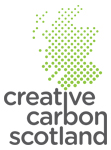How can organisations, local governments or project collaborations support or discourage creativity? Often creating positive organisational climate (or an enabling environment) is a key way in creativity can be encouraged and harnessed.
Whereas an organisational culture is a set of beliefs and values, an organisational climate is the attitude and pattern of behaviours typically exhibited by those who work within the organisations.
In 1994, Swedish researcher Göran Ekvall identified 10 dimensions of an organisational climate that enable creativity and innovation within organisations. Here we go through each of the 10 dimensions he identified, and explain a little more about what a positive creative climate might look like, and what it achieves.
1. Challenge
The organisational members’ commitment and sense of the business’ purpose and its long term objectives. An organisational climate with a high level of challenge is characterised by people being motivated, feeling happy and that their work is meaningful. A low challenge climate leads to feelings of alienation, indifference and apathy.
2. Freedom
The independence of the behaviour of the people in the organisation. In a climate of great freedom, individuals define their own work, and their daily activities, including how they receive and provide information, how they discuss problems and resolutions, and how they make decisions. In the opposite climate, people are passive, working to specific instructions and reminded not to do anything outside the pre-approved framework.
3. Idea support
The way in which new ideas are met and developed. Ideas and ideas are welcomed by both managers and colleagues in the idea-supporting climate. People listen to each other and encourage each other’s initiative. Anyone who comes up with new ideas is given the opportunity to try them out. The spirit is constructive and positive. In the event of poor idea support, “the automatic no” prevails; every idea is immediately met with a negative argument. Troubleshooting and obstruction are common behaviours.
4. Trust
The emotional security of the relationships within the organisation. When trust is high, everyone feels confident to come up with their own ideas and opinions, and one can take initiative without the fear of reprisals or ridicule, if it fails. Communication is open and clear. Where trust is lacking, people are suspicious of each other and expect to be punished for their mistakes.
5. Liveliness
The dynamic nature of the organisation. In a highly dynamic situation, new events are constantly occurring and changes in thought and project management often happen. The pace of change creates a turbulence that is described by people with terms like ‘break-neck speed’ and ‘full speed ahead’. In contrast, the opposite climate is lukewarm, with no surprises or upsets.
6. Playfulness
The ease that prevails. The atmosphere of the organisation is relaxed, with fun, jokes and playfulness. Unusual ideas and funny stories mix up the gravity of the work. In the alternative climate, tasks are approached with a heavy seriousness, and laughter is inappropriate.
7. Debate
The extent to which there are clashes in views, ideas and different experiences and knowledge. In a debating organisation, many different voices are heard and people are keen to present their ideas. Where there is no debate, everyone follows an authoritarian pattern without questioning.
8. Conflicts
The presence of personal emotional tensions (as opposed to idea tensions, “debates”) in the organization. When the level of conflict is high, groups and individuals are at war with one another, and gossip and slander is common. In an organisation were the climate avoids personal conflict, more mature conversations are had, and people are more in control of their emotions.
9. Risk taking
The organisation’s ability to tolerate uncertainty. In obvious risk-taking organizations, people can act quickly and take advantage of emerging opportunities (“going out on limb”, “taking a gamble”). In a risk-averse organization, a cautious, investigative mentality prevails (“better safe than sorry”, “I’ll sleep on it first”).
10. Designated time for ideas
The amount of time people have (and do) use for the preparation of new ideas. In a climate with a lot of time for ideas, there is the opportunity to discuss and test impulses and new proposals at an early stage in their development. If this is not present in the organisational climate, every minute of time is booked and specified. The time pressure makes thinking outside of instructions and planned routines impossible, reducing creative potential.
References
- Ekvall, G. (1996). Organizational Climate for Creativity and Innovation. European Journal of Work and Organizational Psychology , 5(1): 105-123
- Sundgren, M. (2004). New thinking, management control & instrumental rationality – Managing organizational creativity in pharmaceutical R&D. Gothenburg: Institute for Management of Innovation and Technology.














